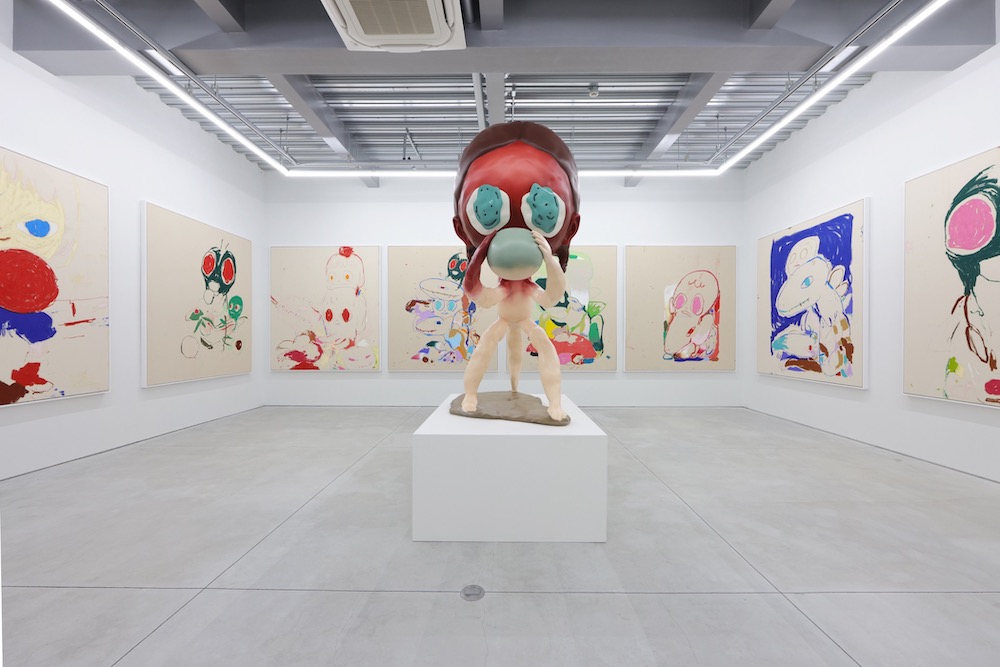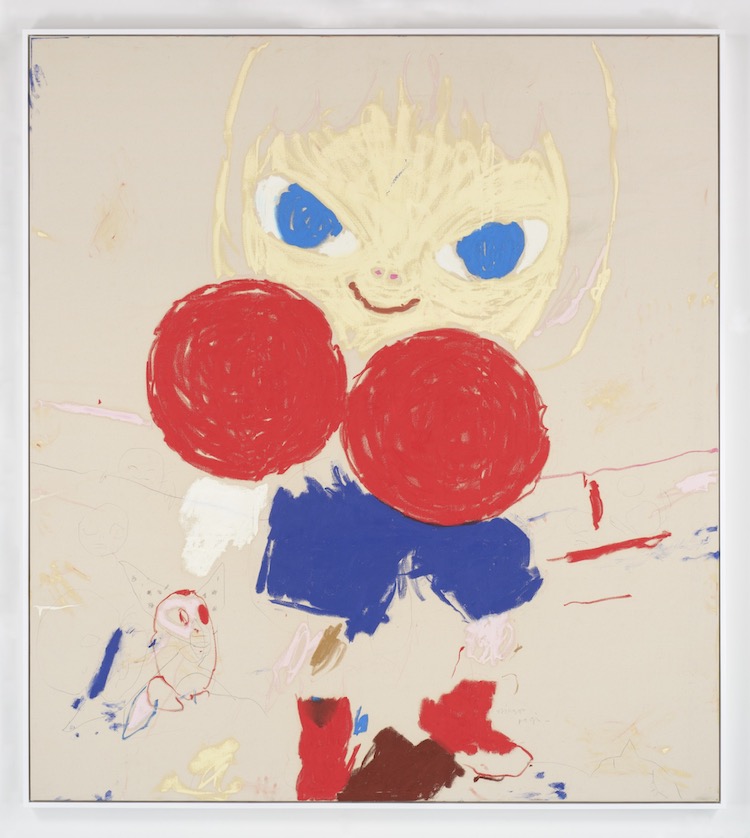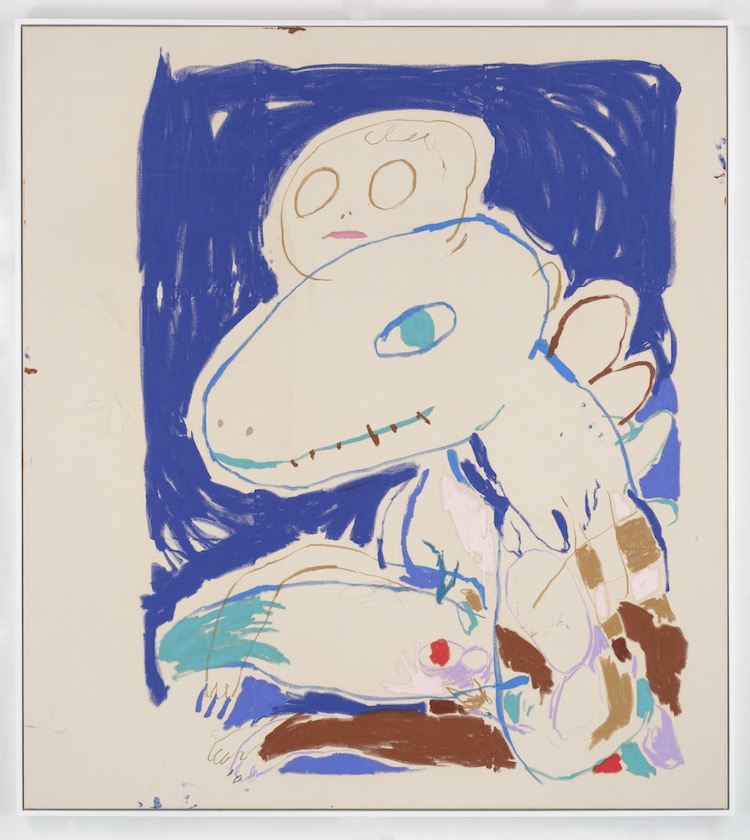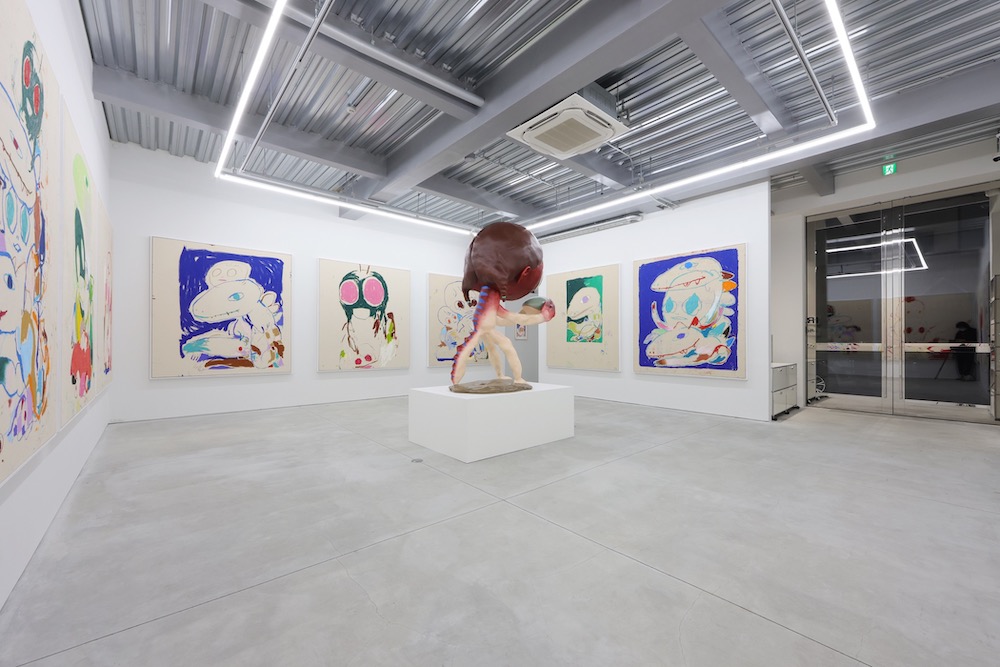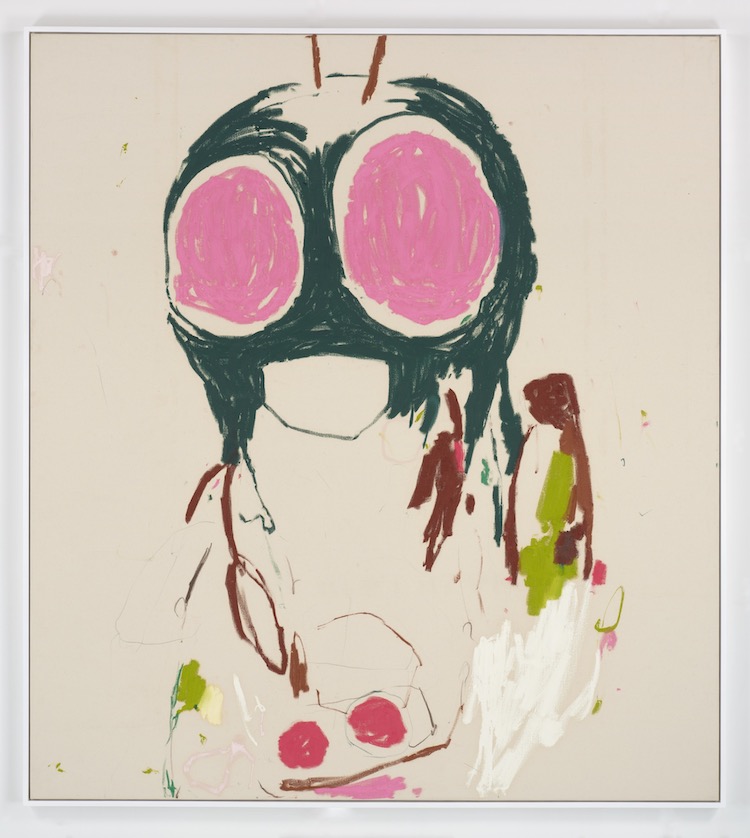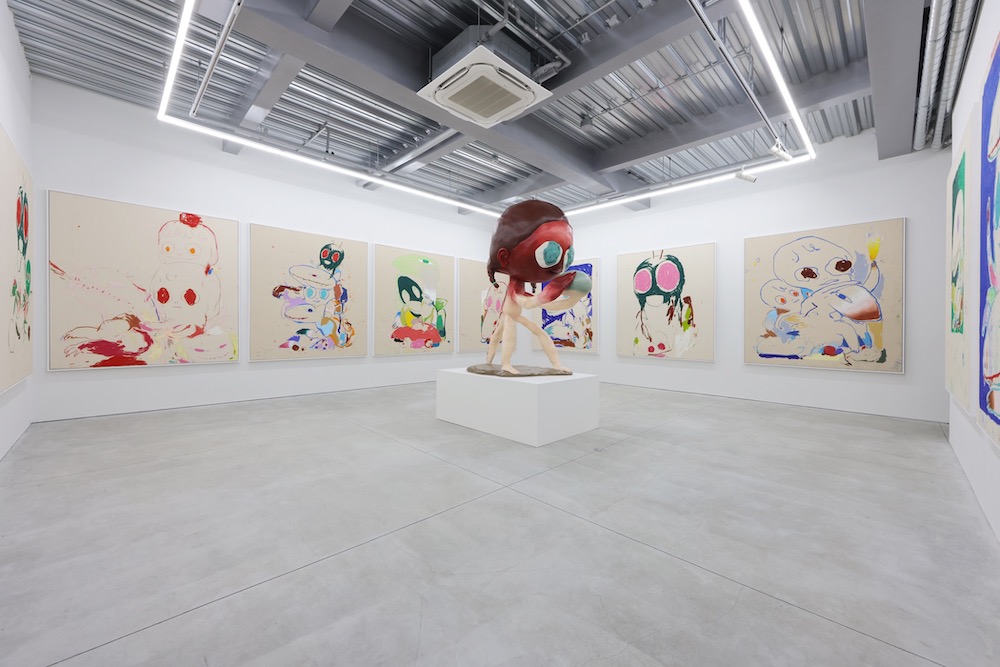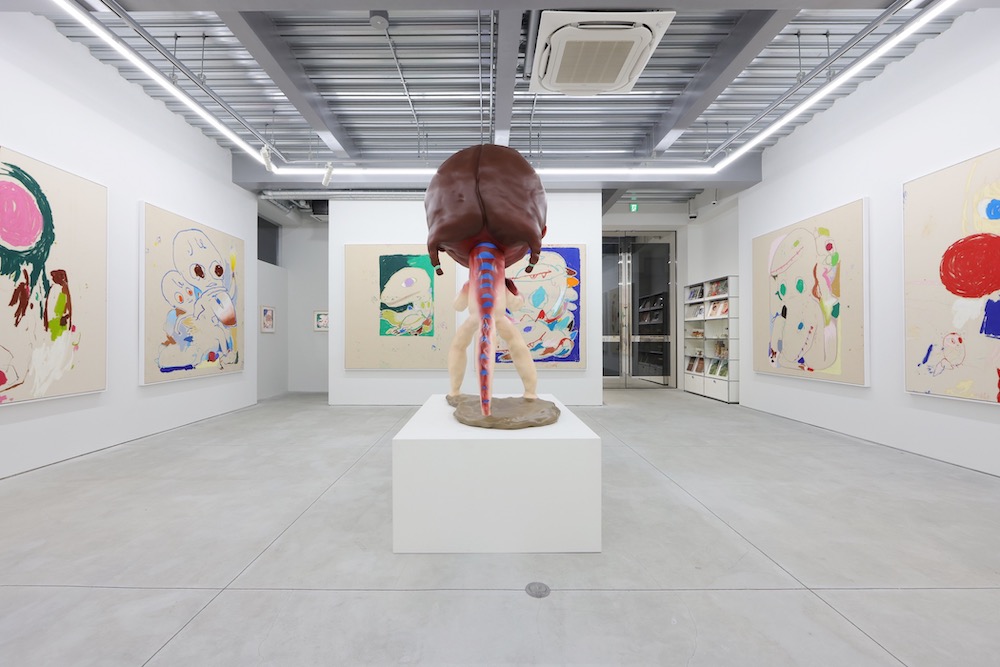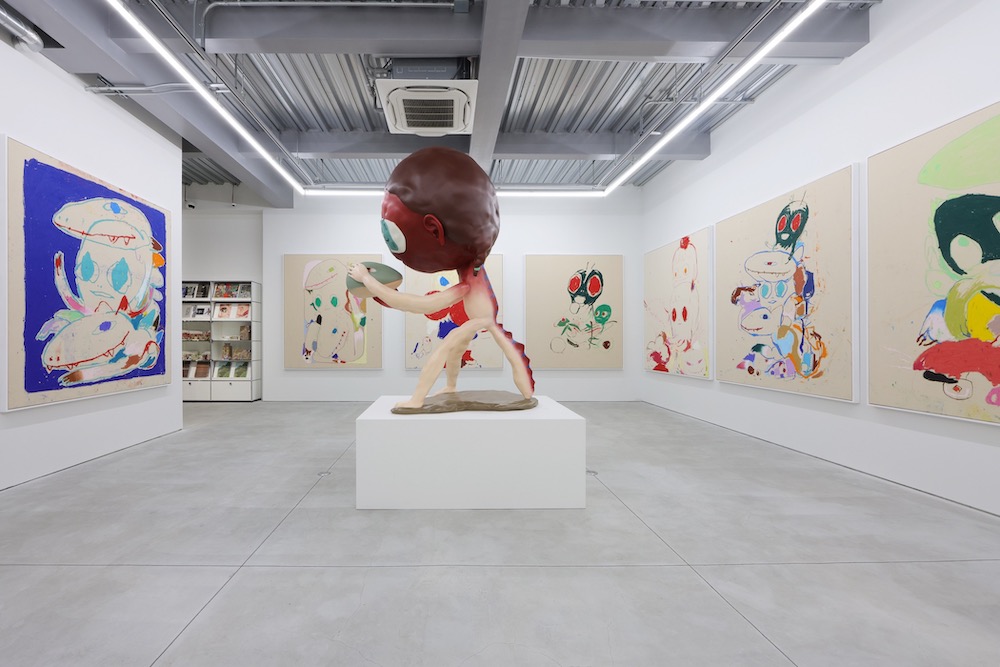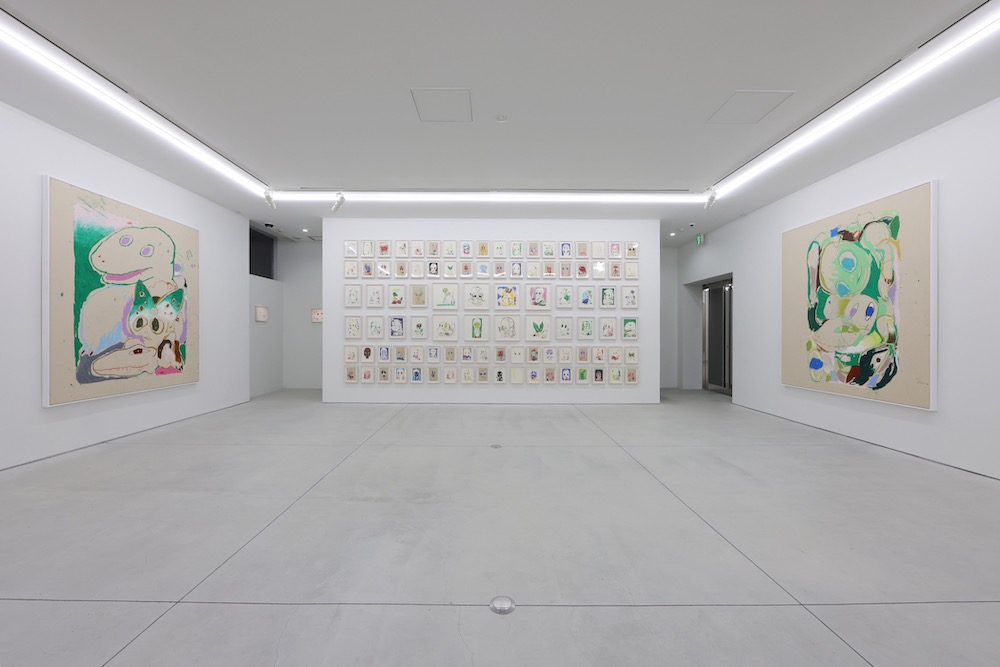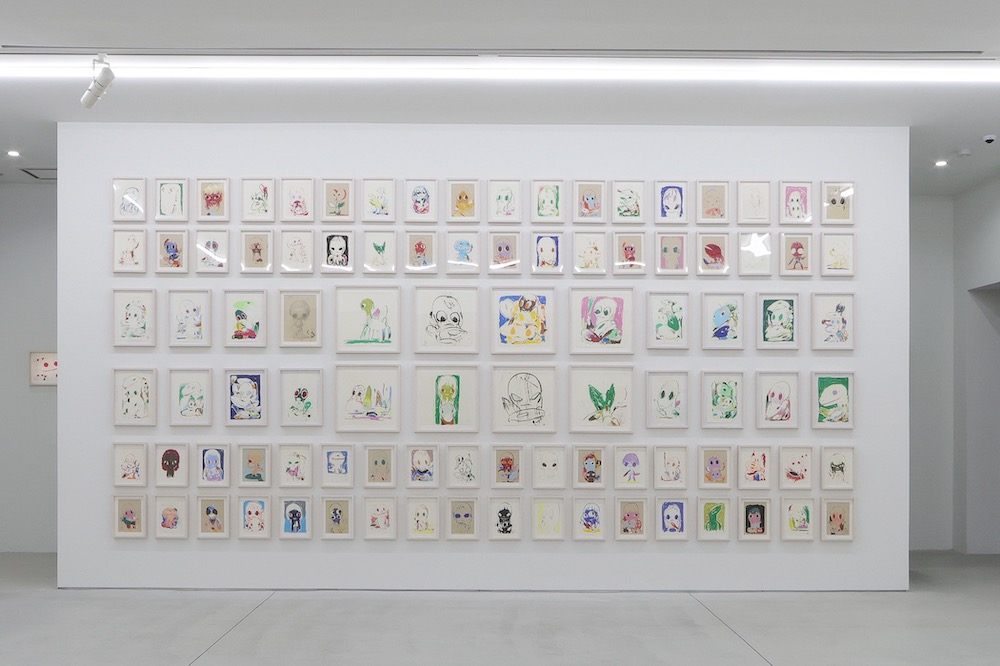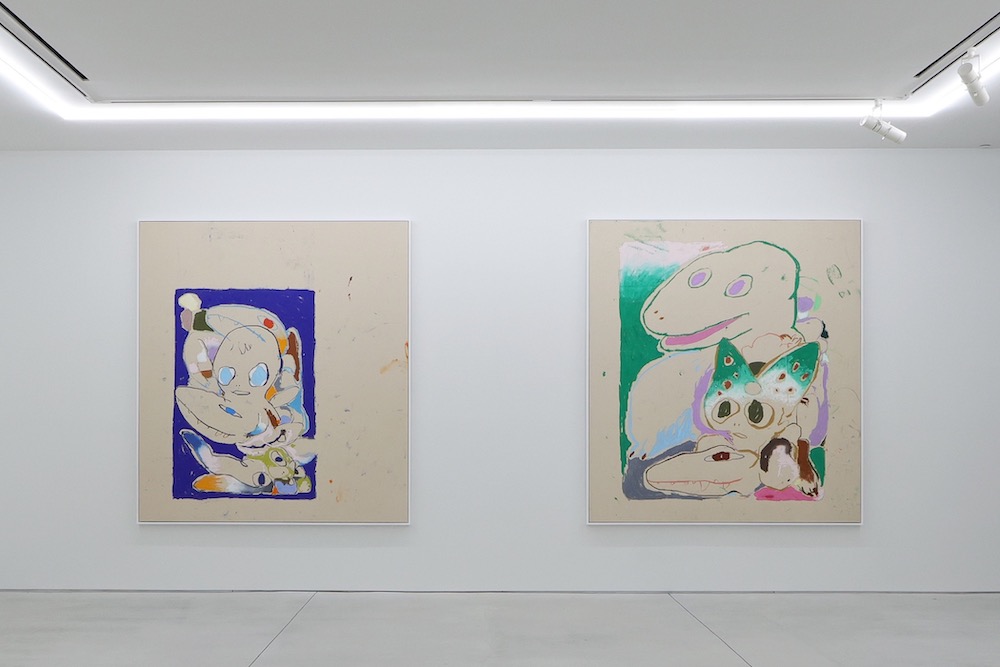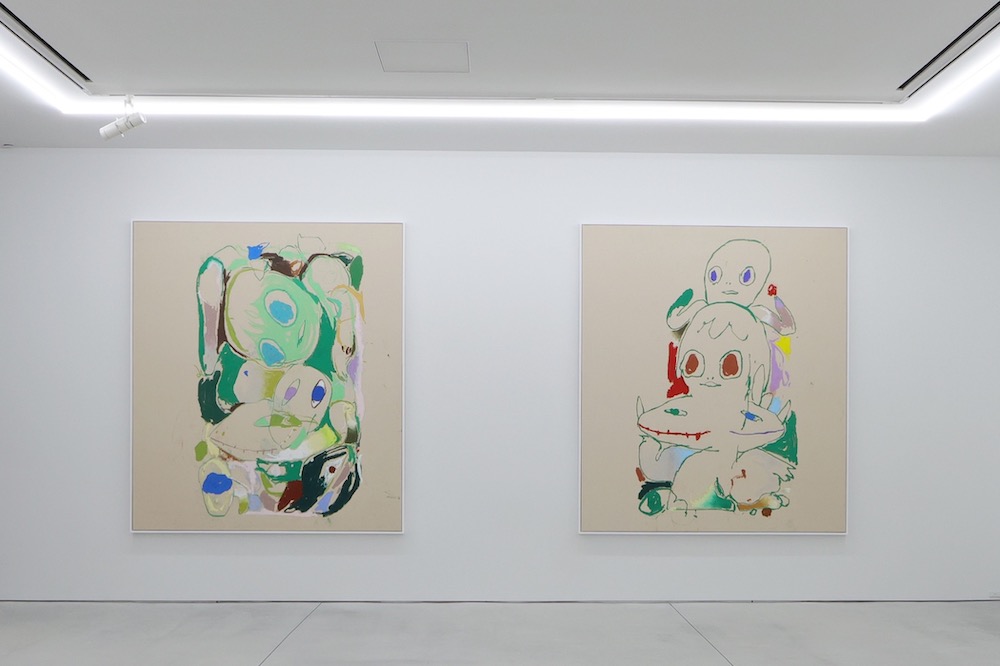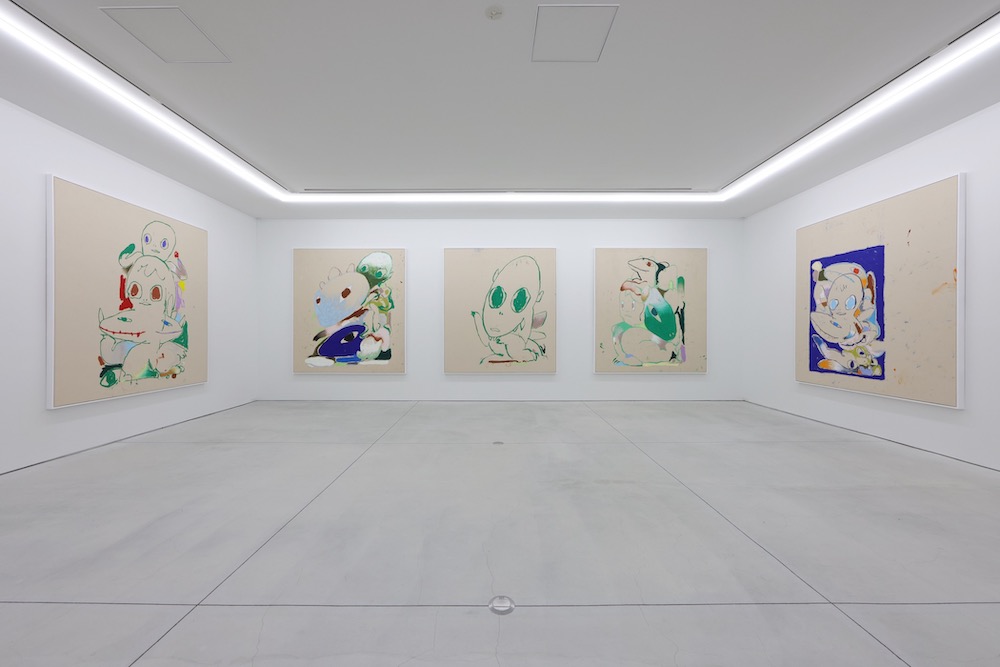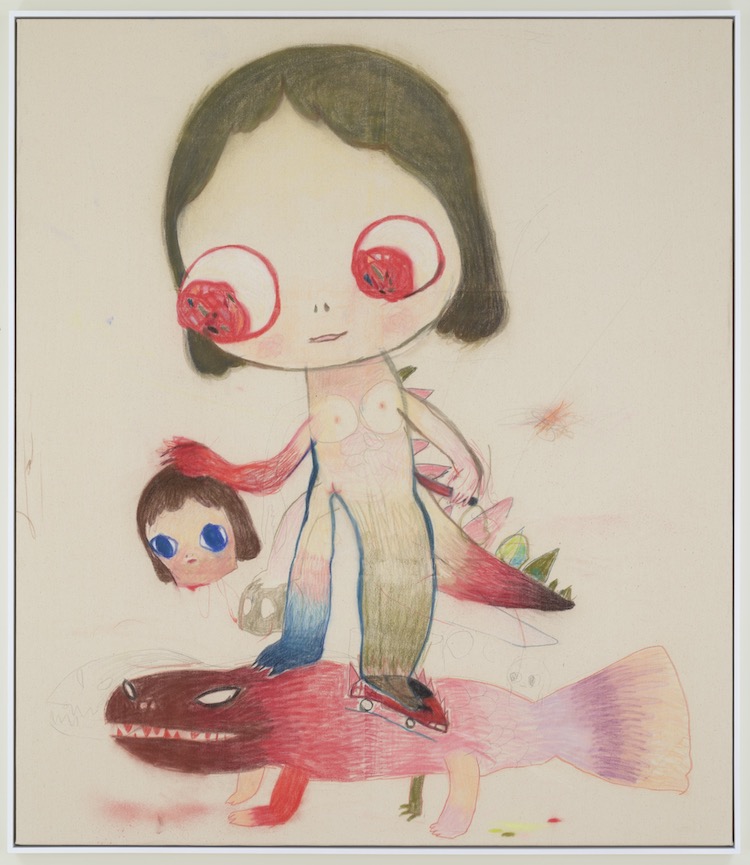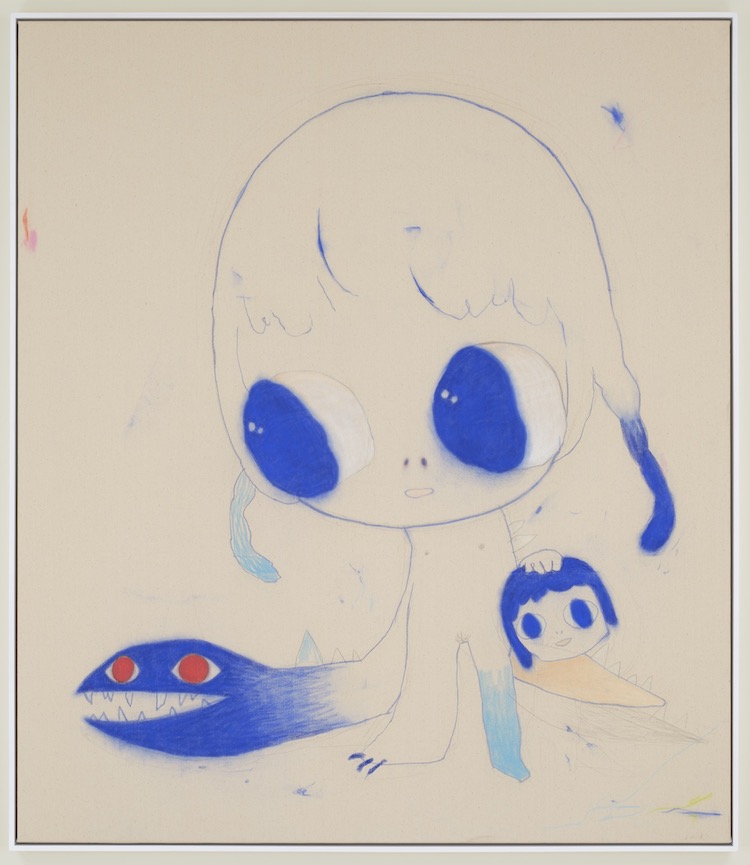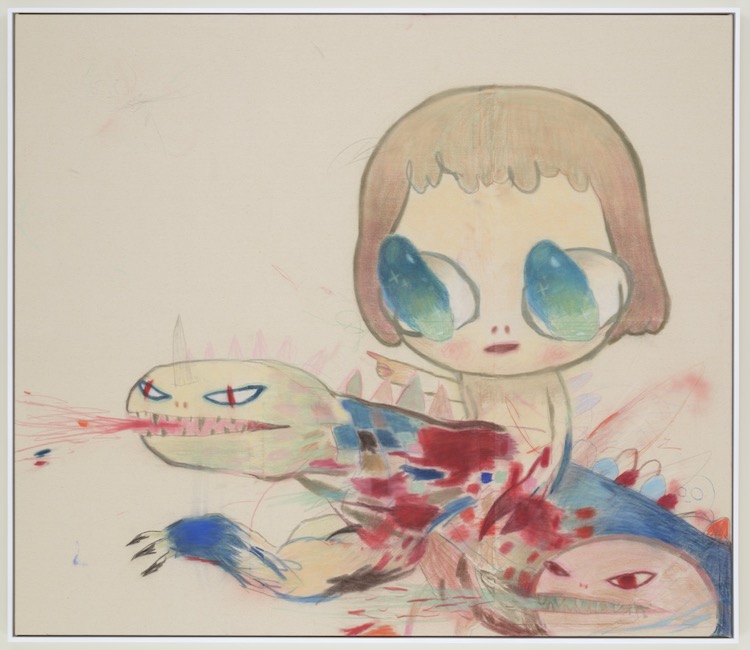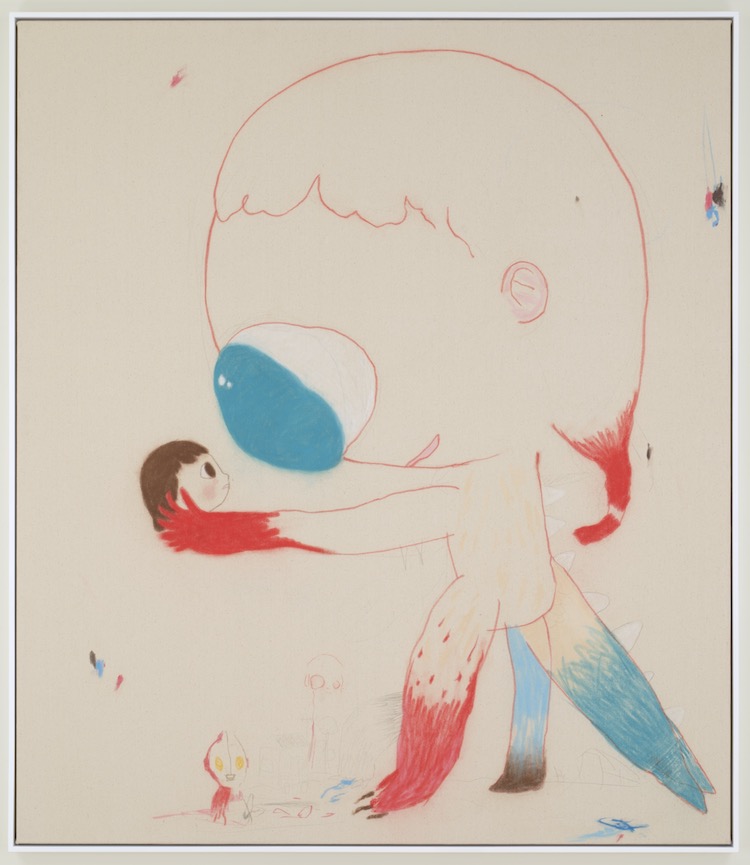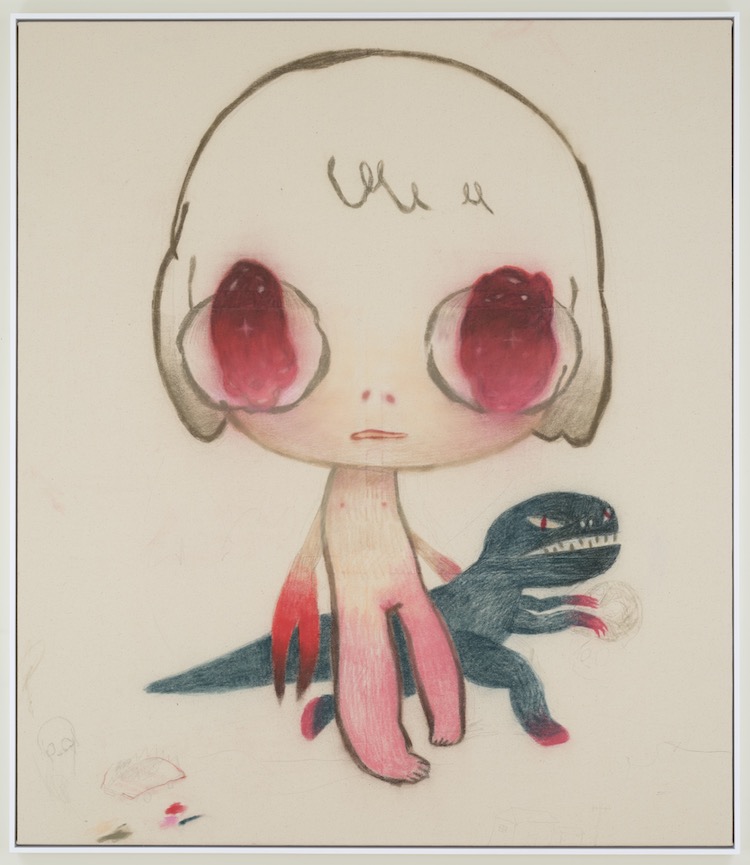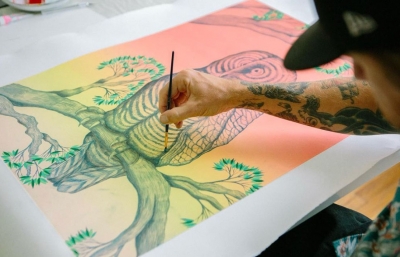It's hard to believe it's been over a decade since we first featured the works by Roby Dwi Antono! And while we did keep a close eye on his career we actually didn't feature that many of his projects and exhibitions which transformed the Indonesian artist from "a young talent" of 2011 to "talk of the town" in LA last year, and now an entire Rumpus throughout Tokyo.
From the 8th of January until February 6th, NANZUKA is presenting three concurrent exhibitions of new works by the Yogyakarta-based artist at NANZUKA UNDERGROUND, NANZUKA 2G, and 3110NZ in the Japanese capital. And while having a triple presentation in a metropolis such as Tokyo is a milestone on its own, as long-time followers and fans of Antono's work we couldn't pass on the importance of his huge style change that's been introduced with these exhibitions. After meticulously rendered drawings inspired by the art titans such as Ryden or Peck, employment of such techniques on the anime-inspired, Nara-like character designs in works on cardboard, oil painting, drawing, spraypainted as well as sculptural work, the artist has made a significant shift towards a highly intuitive and non-compromising style that revives his inner child. Successfully applying such a different approach with great confidence to works on paper, (reverse) canvas, as well as sculpture, we were keen to hear from the artist himself about the background of this change and the significance of this moment in his career.
Saša Bogojev: What prompted the change in your painting style and technique?
Roby Dwi Antono: I always enjoy challenging myself to create something new. It all started when I was tidying up the files and folders on my computer. I accidentally found photos of myself in kindergarten participating in a painting competition. In those photos, I'm seriously playing with oil crayons and oil pastels and scribbling them on a fairly large piece of paper. A child's doodle painting. I am blessed to have parents who never seemed to mind that the walls of their home were covered with crayon and oil pastels doodles. Disproportionate, irregular lines, imaginative, naive, and spontaneous.
How would you describe what is the exhibition about in general?
Rumpus is the right metaphor to describe this exhibition. I was inspired by 'Where the Wild Things Are', a 1963 children's picture book by American writer and illustrator Maurice Sendak that was also made into a film by Spike Jonze. There I found an interesting quote “Let the wild rumpus start!”. This new series of works Is about bringing back the soul of a child that may have been lost, my attempt to visit the memories floating on the surface and dive into the memories buried deep below. It's not an easy thing to collect all the memories, put them together and then organize them neatly and in order according to time.
What does the organizing and visualizing process look like?
Memories are scattered in the middle or piled up in the corners of the room. Maybe they are not meant to be forced into sequences but random and not even traceable. In this deep dive process of finding memories, I choose to revisit past memories one by one from the simple, trivial, and insignificant, to the very emotional. Memories of the joys and sorrows of the past. I then process the random memory to be presented into a visual language. That might give birth to new meanings and feelings from the memory pieces that have been collected, either as simpler or even more complicated and complex.
It sounds like the process for this body of work is very different than what you've worked with previously?
I feel my process for this body of work is very different from previous processes. If my previous oil paint works with its smooth and detailed execution, this series feels more rough and wild. This is my first time trying to paint using oil sticks and oil pastels on a large scale. It is not easy to start the first stroke on this large canvas. But when I started it, my hands moved automatically to the rhythm of moving freely and spontaneously.
Is there such thing as making mistakes when using such a quick, intuitive approach?
I don't think too much about mistakes. Sometimes even my dirty fingers or shoes stuck to the oil stick make a mark on the canvas and make it cooler. The most interesting thing is that when I walked backward away from the canvas that I was painting, I found a quite unique color composition and expressive strokes from the oil stick which resulted in a combination that was quite surprising and unexpected.
What do you find to be an important aspect of such a different approach to your process?
In this process, the memory activity led me to sail home, to be more precise, to my family. Everyone has their own interpretations and I love it when people attempt to decipher the perplexing images. All of this is part of the human experience that affects the concept and visual aspects of my works.
Is it difficult to paint in such a raw manner after years of brushing up your technique?
For this series of works, I really condition myself like a child who likes to draw. It's a bit difficult at first because I'm used to drawing with realist techniques by considering light and shadow as well as proportional and clear shapes. I tried to ignore the painting skills and lessons I had learned. But so far I'm quite happy with the results.
Did you have any particular moments or experiences in mind when reaching for that "inner child" in you?
Way back in primary school, whenever I wanted to play with my friends, I would go visit my father in his blacksmith workshop to ask for pocket money. At the time he was one among many blacksmiths in my villages and I could still picture the busy workshops. That small, bamboo space is home to the distinctive smells of heated steels being molded into household and farming tools. The rattling and thumping rhythm of iron bars sort of became music to my ears. I remember the rundown t-shirt my father received during a political campaign of many seasons ago that he would wear to work, and as the years went by, flickers of burning coals would add more holes on that t-shirt. Outside the workshop, there was a big tree and under its shade customers would sit on an old teak bench, waiting for my father to repair their tools. I like to pick a few pieces of charcoal from the many piles of charcoal used to make hot coals to soften iron. I use those charcoal to draw doodling on the streets in the village. At that time, I really liked to draw dinosaurs and aliens. It seems because of my love for 90s Jurassic Park, Mars Attack, and Men In Black movies that I watched in the theater with friends and family. I also sometimes draw Japanese manga that I borrow from a comic rental shop. As I recall, the one I drew the most was Dragon Ball. I imitate the characters in the comics. My favorite figure that I often draw is the villain character. Of course, at that time my drawing skills were not very good. But I really enjoyed it.
So, how different are the 3 presentations that you have up in Tokyo right now?
For NANZUKA UNDERGROUND and NANZUKA 2G, not too different. The difference is that in Nanzuka I display works with oil sticks and oil pastels as a medium, while at Nanzuka 2G I display paintings in soft pastels. With a more minimalist visual, thinner and softer strokes, and smaller canvas size. Both have the same idea. As for the 3110NZ by LDH kitchen, I present a series of portraits of little girls using spraypaint. Four paintings with black backgrounds.
What are some of the ideas behind those portraits as standout series?
The ideas of this series of works are about human relations, time, and natural order. I try to represent the accumulation of human experience in the past which is always the root of present and future events. Something we do, no matter how small, can play a big role in our lives today. Time will continue to pass. Humans are always faced with worries and fears about the future which has always been a mystery. Humans will never be able to see the future with certainty.
In what way are those ideas relating to your sitter, the little girl?
The little girl in this work is a representation of pure phases and the past as a reminder for me to always try to do good. Silent poses and calm gazes are his efforts to ward off worry about what will happen next. The eyes are large, and clear glass reflecting star clusters and other cosmos constituent materials is a representation of the mystery. We know that up to this point, human questions about the universe have remained unanswered or unanswered. A mystery and uncertainty in the future.
RUMPUS is on view with NANZUKA across Tokyo through February 6, 2022

